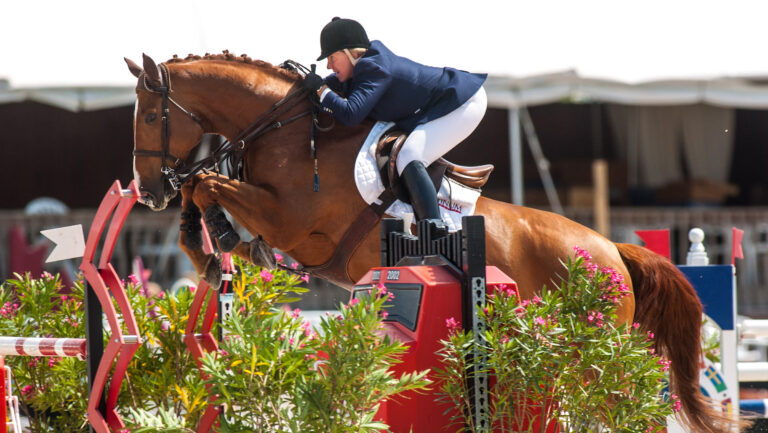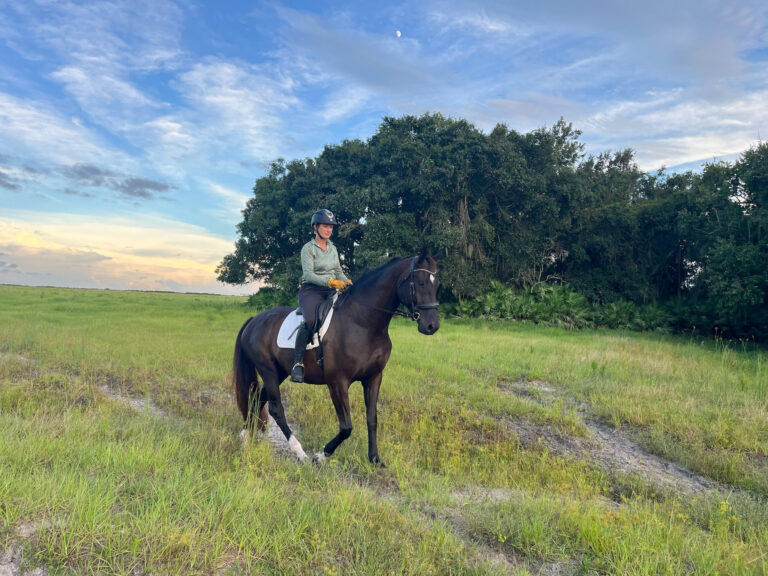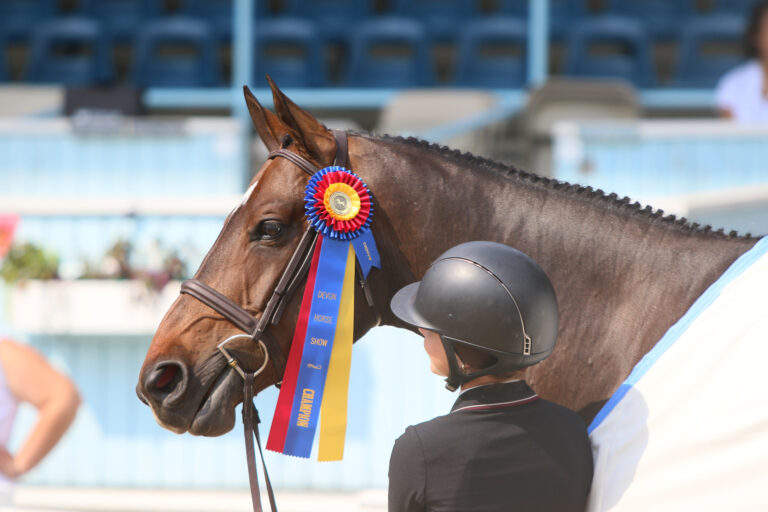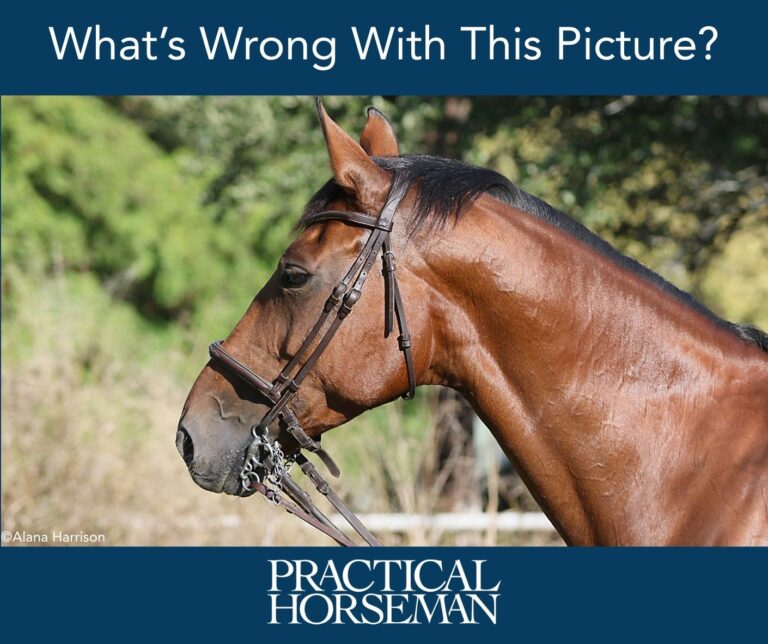Until the 1980s and ’90s, the American Thoroughbred was tremendously popular in the U.S. jumper, hunter, dressage and eventing worlds. The breed’s beauty, athleticism, stamina and courage graced our show rings and stole our hearts.
In homage to the American Thoroughbred—both the beloved backyard mounts and the world-class competitors—we at Practical Horseman decided to take a look back at four of our all-time favorites. Last month we featured Olympic individual show-jumping gold medalist Snowbound and nearly unbeatable show hunter Touch the Sun. This month the Thoroughbred greats are transformative dressage star Keen and U.S. Equestrian Team go-to eventer Good Mixture. Their stories remind us all that this breed once was and could still be a fount of champions.
Keen
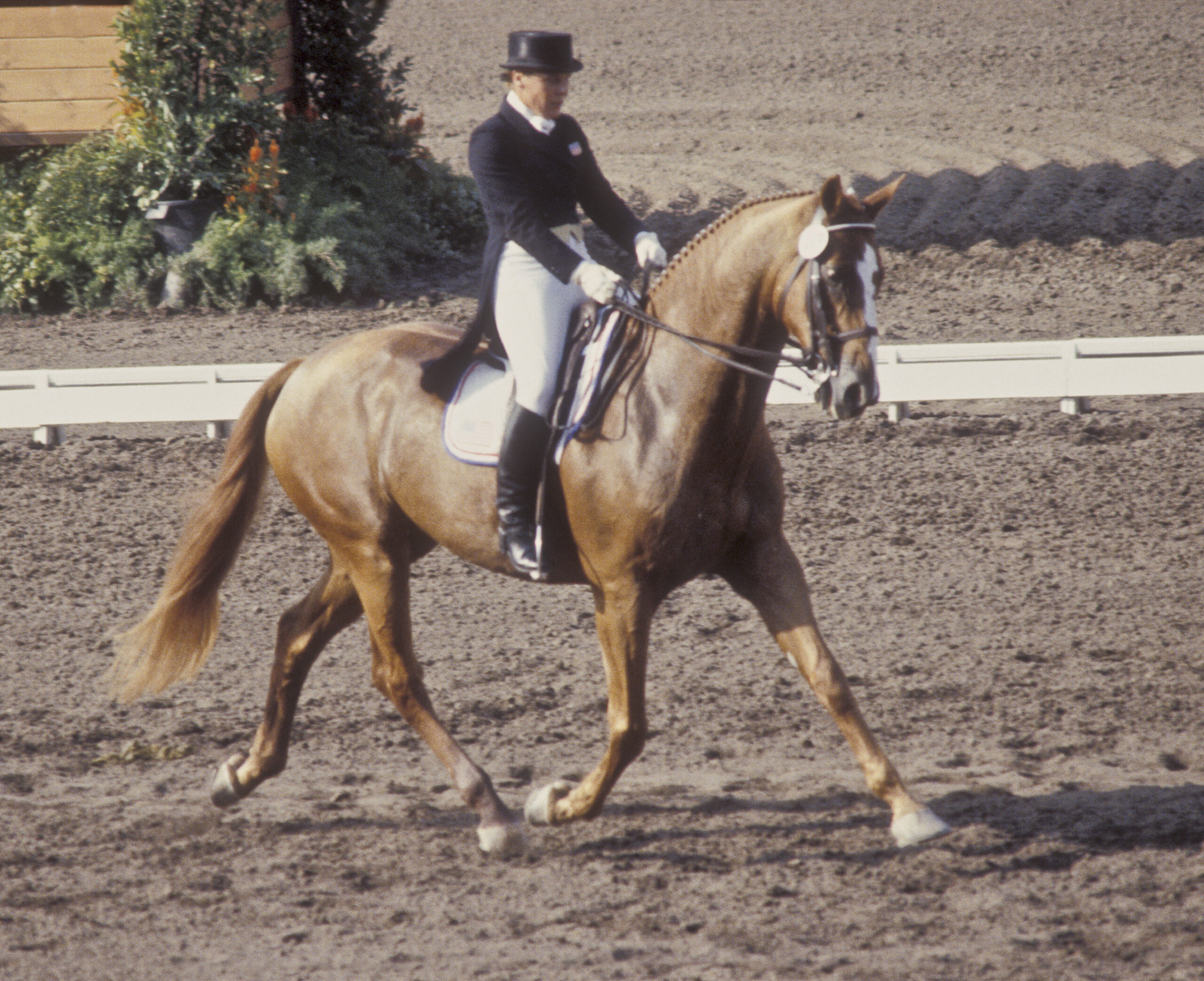
Frequently described as dressage’s ambassador to the U.S., Keen is perhaps the most famous American Thoroughbred to ever compete in the sport. Born on a California racehorse farm in 1966, the chestnut colt by Money Broker out of Mable Victory grew to an unusually large 17.2 hands. As his eventual Olympic partner, Hilda Gurney, says, “They took him to the track to try to race him, but he wouldn’t fit in the starting gate. So they brought him back and threw him in a pasture with a bunch of broodmares and cows.” That’s where Hilda discovered the 3-year-old in 1969.
A 26-year-old schoolteacher at the time and a mostly self-taught rider, Hilda won the National Three-Day Event Championship the same year on a little Thoroughbred named Flags Elf. But she was developing a new passion for dressage and she saw potential in the big-boned 3-year-old’s spectacular gaits. She remembers trying him in the cow pasture: “I got on him and he bucked me off—and then I got back on.” She bought him that day anyway for $1,000 and changed his registered name, Willoughby, to Keen, explaining, “I thought Willoughby was too cocky sounding.”
Keen was an appropriate name for the big horse, who tackled his new career with an excess of energy and enthusiasm. “He was really, really hot,” says Hilda. “When I got him home and started working with him, all he did was passage. It took two months—and a lot of settling him down, a lot of hours of patience and persistence—to get him to trot. He was full of energy. It was like getting on this giant, powerful elastic ball. At the time, we lived at the bottom of the Santa Monica Mountains and we had this lovely galloping path, about a mile and a half long, to the top of the mountains. I would just gallop him up to the top—and that settled him down pretty good. Then I could come back and do dressage.”
Hilda also worked hard to expose the big gelding to different environments. “I made a point of trailering him somewhere at least once a week.” She even evented him some and won the Training level division at the Ram Tap Horse Trials one year.
Access to good dressage instruction was limited in those days, especially in California, as were Hilda’s funds, but she did her best to educate herself. “I always read everything,” she says. “And I trailered Keen six times to the East Coast. [That was before they flew horses on airplanes.]” At the American Dressage Institute in New York, she trained with dressage experts Hans Moeller, Franz Rochawansky and Bengt Ljungquist. Over the years, she also helped to bring clinicians to the West Coast.
Early in Keen’s career, Hilda didn’t realize he had international potential. “I had no clue. I have a good work ethic and just happened to buy this wonderful horse. He made dreams come true that I hadn’t even dreamed about!” Those dreams began with a U.S. Dressage Federation Horse of the Year award in 1974, the first of five Horse of the Year awards Keen earned in total. The following year, the pair qualified for the Pan American Games in Mexico City. “That was my first real international competition,” remembers Hilda. “We got the silver and our team won the gold. Nobody expected us to.”
The following year, Keen and Hilda competed in the Montreal Olympics, placing fourth individually in the Grand Prix and helping to earn the first U.S. Olympic dressage medal since 1948, a team bronze. The pair finished 10th in the Grand Prix Special, but Hilda blames herself for that, saying, “I didn’t ride him very well. I was pretty green myself. My biggest fight was always to keep him round and on the bit. I just didn’t know what I was doing half the time.”
Two years later, with more experience and instruction under their belts, Hilda and Keen placed fourth in the Aachen, Germany, Grand Prix Special and seventh in the Goodwood, England, World Championships. As they continued to crisscross the U.S. to train and compete, they gave exhibitions along the way. “I’d usually look at the dressage associations for somewhere to stay and then would do an exhibition there,” Hilda remembers, pointing out how influential Keen’s story was in building the sport in America. “The fact that you could get a Thoroughbred and train him yourself and didn’t have to have money—that it wasn’t an elitist sport—really helped get dressage going.”
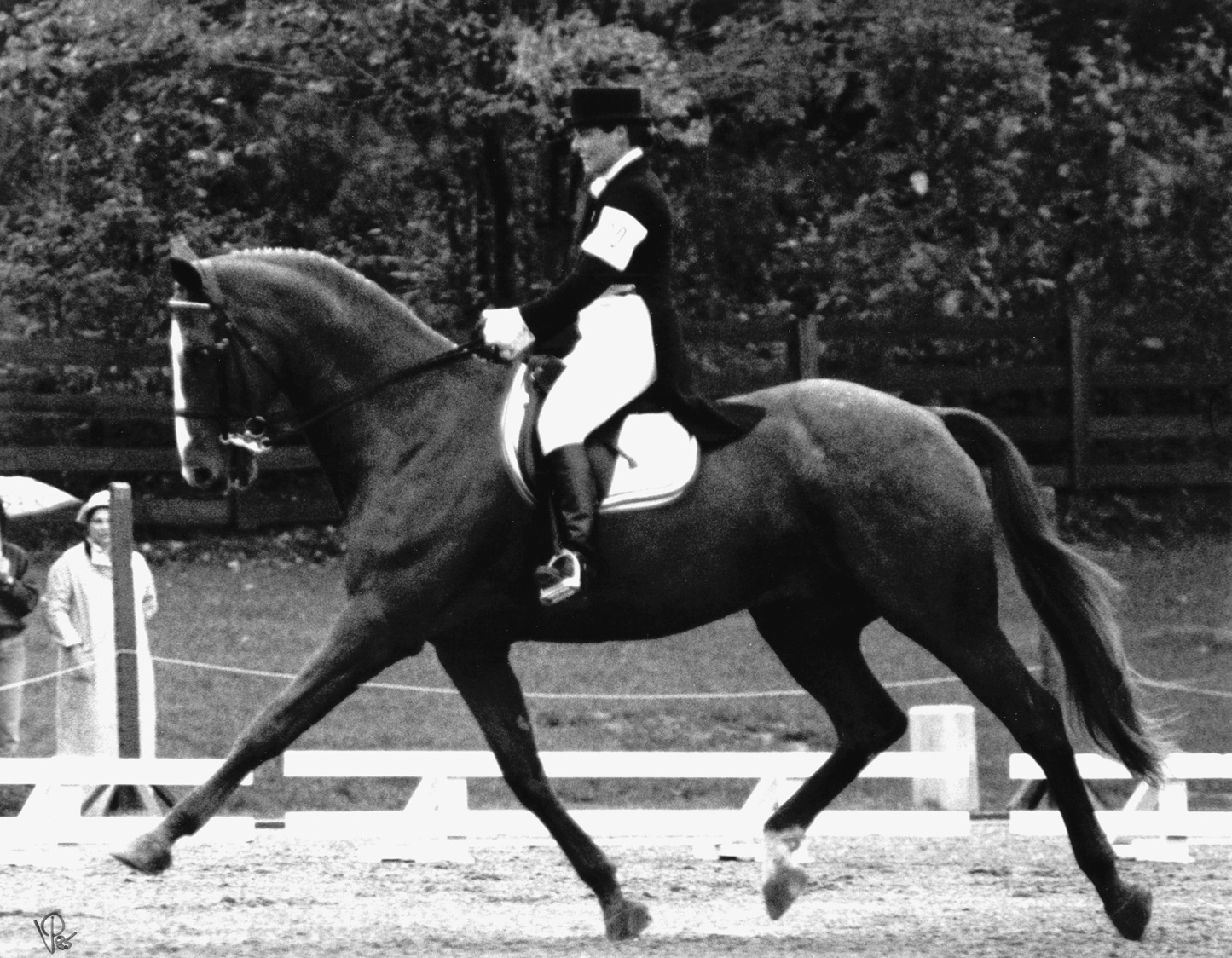
Keen even taught an international dressage coach a new lesson—the hard way. At the 1979 Puerto Rico Pan Am Games, Hilda’s coach didn’t allow her to ride Keen in the morning before the competition, which she had always done previously. “He kept saying, ‘He’ll be tired.’ He wouldn’t even let me work him in the warm-up. Well, I went into the Grand Prix and we passaged the whole walk work. We never took a step of walk! That’s how Keen expressed his energy. He didn’t get tense or hold himself tight. He made himself looser by passaging or extending the trot. The next day, the guy realized that I really did need to work my horse. And we ended up winning the gold medal.”
Keen’s exuberance was often as challenging to contain from the ground as it was from the saddle. Throughout his life, unless he was in absolutely familiar surroundings, the big horse required two people to lead him, one on each side. His enthusiasm was never ill-tempered, however, says Hilda. “He was the friendliest, sweetest, most wonderful horse. He would knock all his feed out of the bucket and let the squirrels and rabbits under his feet eat it because he wanted to share.”
In 1980, a serious neck injury sidelined Keen from competition. Hilda wasn’t sure he would ever recover. But after a three-year hiatus, he was back in training. He represented his country in one more Olympics at the age of 18—this time on his home turf in Los Angeles—placing 14th individually. Never fully retiring, he went on to compete in the Young Riders division with up-and-coming rider Kathleen Raine. “He was still a handful,” says Hilda. “Even when he was 23, two people had to lead him in for the awards.”
Hilda’s love for her great partner passed the greatest test after the 1976 Olympics. “One of the backers for German Olympian Harry Boldt offered me a million dollars for Keen. Then, when I refused that, he offered me a blank check. But I couldn’t have sold the horse. And, you know, I have no regrets. I have this wonderful life I just adore, my own nice farm [named Keenridge Farm, in his honor], a wonderful sport I’m still able to ride in at 71—and I’m just having a blast. And all of this is because of Keen. I owe Keen everything.”
Practical Horseman thanks The Jockey Club Thoroughbred Incentive Program and the National Show Hunter Hall of Fame for providing background research for this article.
Read about more influential American Thoroughbreds: Good Mixture, Snowbound and Touch the Sun.This article originally appeared in the November 2015 issue of Practical Horseman.





